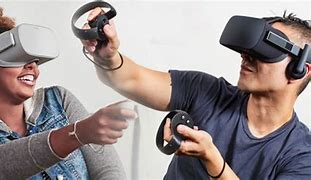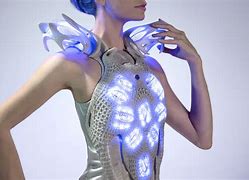Virtual Reality Unleashed: A Comprehensive Review of New VR Headsets
Imagine stepping into a world where you can climb the highest mountains, explore the depths of the ocean, or even battle dragons, all without leaving your living room. This is the power of virtual reality, and it’s rapidly evolving with new VR headsets emerging constantly. With each new model comes an array of advancements in technology, graphics, and user experience, pushing the boundaries of what’s possible in virtual worlds.
This comprehensive review dives deep into the latest VR headsets, examining their key features, benefits, and potential drawbacks. We’ll explore the immersive capabilities of each headset, compare their visual fidelity and comfort levels, and consider their suitability for various types of users – from gamers and creators to those seeking educational and therapeutic applications. Whether you’re a seasoned VR enthusiast or a curious newcomer, this guide will provide valuable insights to help you navigate the exciting landscape of modern VR headsets.
Join us on a journey through the cutting edge of virtual reality, and discover the immersive worlds waiting to be explored.
Related Post : Tech Tips for Entrepreneurs: Tools to Boost Your Startup
Virtual Reality Unleashed: A Comprehensive Review of New VR Headsets
Virtual reality, or VR, has evolved from a futuristic concept to a tangible reality, offering immersive experiences that blur the lines between the digital and physical worlds. This article provides a comprehensive review of new VR headsets, exploring their features, benefits, and applications, empowering you to make an informed decision for your virtual reality journey.
What is Virtual Reality?
What is VR? Virtual reality is a technology that creates immersive, interactive experiences by simulating a three-dimensional environment using a headset. This headset displays images and sounds, creating the illusion of being present in a different world.
How does VR work? VR headsets typically utilize sensors, such as gyroscopes and accelerometers, to track the user’s head movements. These movements are then translated into real-time adjustments within the virtual environment, providing a sense of presence and immersion.
How does VR differ from augmented reality (AR)? Unlike VR, which creates an entirely virtual world, augmented reality overlays digital information onto the real world through devices like smartphones or smart glasses. AR enhances the real world, while VR creates a completely separate virtual experience.
Why Should You Care About VR Headsets?
VR headsets offer a gateway to a world of entertainment, education, and beyond. They provide a level of immersion that surpasses traditional screens, making you feel like you’re truly part of the action.
The Immersive Experience: Escape to New Worlds
VR headsets allow you to step into diverse worlds, ranging from breathtaking landscapes to fantastical realms. Whether you’re exploring ancient ruins, soaring through the sky, or battling monstrous creatures, VR provides an unparalleled sense of presence and engagement.
Beyond Gaming: VR Applications in Education, Healthcare, and More
VR extends beyond entertainment, finding valuable applications in education, healthcare, and various industries. Students can learn in immersive environments, surgeons can practice complex procedures, and architects can visualize designs in a lifelike setting.
The Future of Entertainment: A Glimpse into Tomorrow
VR holds immense potential for the future of entertainment. Imagine watching movies with realistic 3D environments, attending concerts virtually, or even playing games with friends in a shared virtual space. VR is poised to revolutionize how we experience and interact with entertainment.
Top VR Headsets in the Market: A Detailed Look
Here’s a closer look at some of the leading VR headsets available today:
Meta Quest 2: The King of Standalone VR
Features and Specs:
- Standalone VR headset, no PC required
- High-resolution LCD displays
- Integrated hand tracking
- Powerful Qualcomm Snapdragon XR2 processor
Pros:
- User-friendly, affordable standalone option
- Excellent tracking and comfortable fit
- Wide library of games and experiences
Cons:
- Lower resolution compared to PC VR headsets
- Graphics can be less impressive than high-end PC VR
Best Uses: Gaming, entertainment, social VR
HTC Vive Pro 2: High-Fidelity VR for Enthusiasts
Features and Specs:
- High-resolution LCD displays with 5K resolution per eye
- Advanced off-ear audio system
- Powerful PC-connected VR headset
- SteamVR compatibility for a vast library of games
Pros:
- Exceptionally high-resolution visuals for a crisp and detailed experience
- Precise tracking and comfortable design
- Suitable for high-performance gaming and professional applications
Cons:
- Higher price compared to other headsets
- Requires a powerful PC to run smoothly
Best Uses: High-end gaming, professional applications, entertainment
Valve Index: The Pinnacle of PC VR
Features and Specs:
- High-resolution LCD displays with 1440×1600 resolution per eye
- Knuckles controllers with advanced finger tracking
- Off-ear audio system with a wide field of view
- SteamVR compatibility for a vast library of games
Pros:
- Exceptional visual fidelity and smooth performance
- Cutting-edge Knuckles controllers for intuitive interactions
- Excellent tracking and wide field of view
Cons:
- Higher price point compared to other headsets
- Requires a powerful PC to run smoothly
Best Uses: Enthusiast-level gaming, VR development, professional applications
PlayStation VR 2: Sony’s Entry into the Next-Gen VR World
Features and Specs:
- High-resolution OLED displays with 2000×2040 resolution per eye
- Enhanced eye tracking and foveated rendering
- Haptic feedback in the headset and controllers
- Integrated Tempest 3D AudioTech for immersive sound
Pros:
- Next-generation VR features with high-resolution visuals
- Precise tracking and immersive audio
- Exclusive access to PlayStation VR games
Cons:
- Requires a PlayStation 5 console to operate
- Currently limited library of VR games
Best Uses: PlayStation console gaming, entertainment, exclusive VR experiences
Choosing the Right VR Headset: A Guide to Making the Best Decision
Selecting the right VR headset involves considering factors like your budget, gaming platform, and desired experiences. Here’s a guide to help you make an informed choice:
Determine Your Budget: Setting Realistic Expectations
VR headsets range in price from affordable standalone options to high-end PC VR systems. Set a realistic budget based on your financial constraints and prioritize features that align with your needs.
Consider Your Gaming Platform: PC, Console, or Standalone?
Decide whether you prefer PC VR, console VR, or standalone VR. PC VR offers the highest performance but requires a powerful computer. Console VR is limited to specific games and consoles, while standalone VR provides freedom without a PC connection.
What Kind of Experience Are You Seeking: Gaming, Entertainment, or Productivity?
Think about the primary purpose of your VR headset. Are you looking for immersive gaming experiences, entertainment, or productivity tools? Each headset offers distinct advantages depending on your specific needs.
Read Reviews and Compare Features: Making an Informed Choice
Before making a purchase, explore reviews and compare features across different models. Research the pros and cons of each headset to ensure it aligns with your requirements.
Setting up Your VR Headset: A Step-by-Step Guide
Once you’ve chosen your VR headset, here’s a step-by-step guide to set it up:
Unboxing and Initial Setup: Getting Started
Carefully unbox your VR headset and familiarize yourself with its components. Follow the manufacturer’s instructions to complete the initial setup, including installing software and configuring the headset.
Adjusting the Headset for Comfort and Fit: Finding the Perfect Position
Adjust the headset straps and settings to ensure a comfortable and secure fit. Proper fit is crucial for minimizing discomfort and maximizing immersion.
Connecting to Your PC or Console: Establishing a Connection
Connect your headset to your PC or console using the provided cables or wireless adapters. Follow the manufacturer’s instructions for connecting and configuring the headset with your device.
Setting up Room Scale Tracking: Defining Your Play Area
For room-scale VR experiences, define your play area by using the included sensors or controllers to establish the boundaries of your virtual environment. This ensures safe and enjoyable VR experiences.
Best Practices for Using Your VR Headset: Tips for a Safe and Enjoyable Experience
To ensure a safe and enjoyable VR experience, follow these best practices:
Safety Precautions: Ensuring a Comfortable and Secure Environment
Always ensure a safe and clutter-free environment before using your VR headset. Avoid using VR in confined spaces or areas with potential hazards.
Taking Breaks: Preventing Eye Strain and Fatigue
Take regular breaks during extended VR sessions to prevent eye strain and fatigue. Follow the manufacturer’s guidelines for recommended break times.
Cleaning Your Headset: Maintaining Optimal Performance
Clean your headset regularly using microfiber cloths or recommended cleaning solutions. Maintaining hygiene and cleanliness ensures optimal performance and extends the lifespan of your VR headset.
Exploring VR Content: Discovering New Worlds and Experiences
Once you’ve set up your VR headset, dive into the world of VR content. Explore games, experiences, and applications available on platforms like SteamVR, Oculus Store, or PlayStation Store.
The Future of VR: What’s Next for Virtual Reality Headsets?
VR technology is constantly evolving, with advancements promising more immersive and realistic experiences.
Advancements in Technology: Higher Resolution, Better Tracking, and More
Future VR headsets will feature higher resolution displays, improved tracking systems, and more advanced features like haptic feedback and eye tracking.
The Rise of Mixed Reality: Blending Virtual and Real Worlds
Mixed reality (MR) technology combines aspects of both VR and AR, blending virtual objects and information into the real world. MR headsets are poised to offer even more immersive and interactive experiences.
The Potential of VR: Transforming Industries and Everyday Life
VR has the potential to transform various industries, from healthcare and education to entertainment and business. VR experiences will become more accessible and integrated into our everyday lives.
Conclusion: Embracing the Immersive Future of VR
VR is more than just a technological novelty; it’s a platform for creating immersive experiences that redefine entertainment, education, and our interaction with the world. As VR technology continues to evolve, the future holds even more exciting possibilities for exploration and innovation.
VR: A New Era of Entertainment and Beyond
VR offers a new era of entertainment, allowing you to escape to different worlds, engage in exciting adventures, and connect with others in a shared virtual space. Beyond entertainment, VR is transforming industries and empowering individuals to learn, create, and interact with the world in innovative ways.
Finding the Right Headset for Your Needs: Making the Virtual World Your Own
With the right VR headset, you can unlock a world of immersive experiences, from gaming and entertainment to education and beyond. Explore the world of VR headsets, consider your needs and preferences, and embark on your journey into the virtual world.



